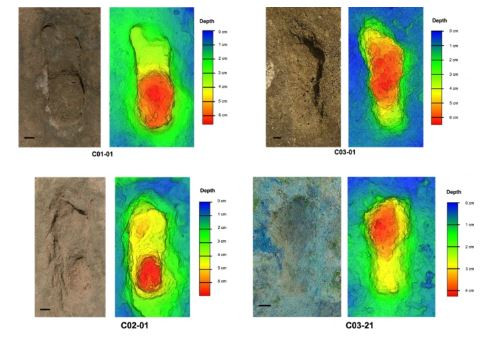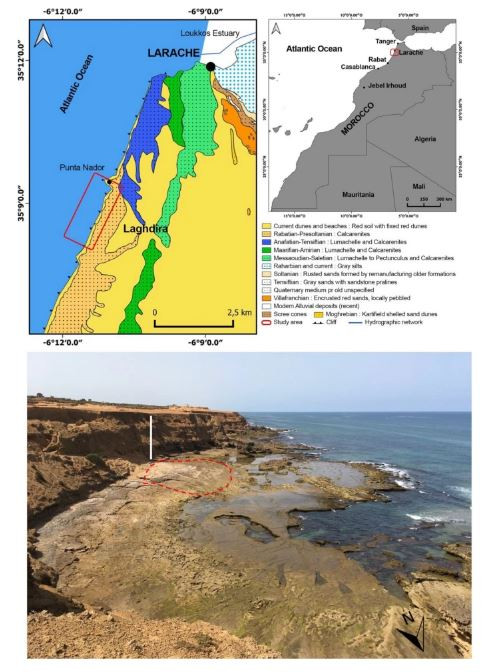The team spotted them by chance in 2022 while studying boulders on a nearby beach
Eighty-five (85) well-preserved human footprints, which are estimated to be among the oldest in the world discovered by researchers in Morocco. The team spotted them by chance in 2022 while studying boulders on a nearby beach, according to a study published in the journal “Scientific Reports”.
“Between the tides, I told my team that we have to go north to explore another beach”stated in Live Science the study’s lead author Mouncef Sentrati, associate professor of coastal dynamics and geomorphology at the University of South Brittany in France.
“We were surprised when we found the first pug. At the beginning, We weren’t convinced it was pugs, but then we found more.”he added.
The analysis of the area– which is the first North African site where such traces have been found– he revealed two trails that contained a total of 85 human tracks belonging to at least five individuals.
For trace dating, the team used the method of optically stimulated luminescence, which determines when specific minerals on or near an object were last exposed to heat or sunlight. Based on the age of the fine quartz grains that make up most of the beach sand, researchers determined that a group of Homo sapiens walked the beach about 90,000 years ago. The event took place during the Late Pleistocene, also known as the last ice age, which ended about 11,700 years ago, according to the study.
“We took measurements on site to determine the length and depth of the footprints”, the researcher said. “Based on the pressure and size of the feet, we were able to roughly determine the age of the subjects, which included children, teenagers and adults,” he explained.
The researchers attribute the excellent preservation of the ancient prints on a number of factors, including beach layout and tidal range. However, they don’t know why those people were on the said beach. Future analysis of the area could answer this question. Investigators should act quickly, as well “the continued collapse of the rocky platform of the coast could lead to its eventual destruction, including the traces preserved on it”the team wrote in their study.
Source :Skai
With a wealth of experience honed over 4+ years in journalism, I bring a seasoned voice to the world of news. Currently, I work as a freelance writer and editor, always seeking new opportunities to tell compelling stories in the field of world news.












